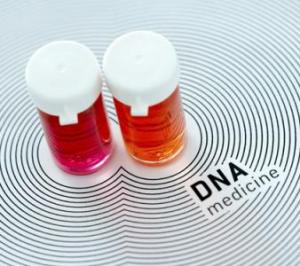Jun 25 2010
EUREKA project E! 3371 Gene Transfer Agents has made great advances in the development of novel non-viral carriers able to introduce genetic material into the target cells. These new agents, derivatives of cationic amphiphilic 1,4-dihydropyridine (1,4-DHP), avoid the problems of the recipient's immune system reacting against a viral carrier.
The project partners have developed methods to produce them in large amounts, which solves another of the problems with viral delivery. But the greatest advantage is that the new compounds are significantly more effective at delivering DNA into cell nuclei than other standard synthetic carriers; increasing the chance of the DNA successfully controlling the defective genes, and the disease.
Gene therapy involves the insertion of DNA into human cells within the body to treat disease. The technique is still in its early days, and has been demonstrated successfully only in the last decade. Most investigation has been into the possibilities for treating hereditary diseases related to a genetic defect, and the technique also has potential uses in treating the early stages of cancer, and in cardiovascular and neurodegenerative diseases.
Gene therapy faces many difficulties as a practical method; not the least of which is that DNA is a large and complicated structure which needs to be delivered and attached to the correct section of the recipient's set of DNA. A number of methods are in use or under investigation for introducing DNA into cells (a process known as transfection) – using viruses, chemical agents or physical injection.
 Nanomedicine" />This image represents the future of medicine.
Nanomedicine" />This image represents the future of medicine.
Viruses or chemical carriers
With viral carriers, the DNA to be introduced is injected into the virus, which carries it into the cell by way of a vesicle formed around the virus particle by the cell wall. Once inside the cell, the vesicle breaks down and the virus injects the DNA into the cell's nucleus. The viral route does, however, have major disadvantages. The immune system of the person receiving treatment often interferes with viral activity; and viruses can have unpredictable mutagenic side-effects. Also large-scale production of viral vectors is problematic.
A wide range of chemical agents are already known to be able to form a complex of 1,4-DHP with DNA and deliver it into the recipient's cells. These agents are much easier to produce on a large scale than viruses and do not usually cause an immune response. However they are not so effective at introducing the DNA as the viral carriers.
Seeking the best of both worlds
The challenge facing the partners in the EUREKA project was to combine the effectiveness of the viral vectors with the production advantages and lack of immune response shown by chemical agents. Scientists at the Latvian Institute of Organic Synthesis and the University of Kuopio in Finland had discovered new groups of possible DNA transfer agents: 1,4-DHP derivatives. These compounds were found to be more effective in gene transfer than two widely-used standard gene delivery agents (known as DOTAP and PEI 25) and the discovery was covered by a patent. This finding offered the exciting prospect of better efficiency from a non-viral carrier.
Professor Arto Urtti of Helsinki University (formerly from Kuopio) explains: "When these compounds are in solution and DNA is added, they bind together. The large, loose DNA molecule collapses and tiny particles of about 10-50nm in diameter are formed, composed of both DNA and carrier. When you present this to the cells, the nanoparticles bind to the cell surface, which folds inwards to form a vesicle within the cell. The particles then escape from the vesicle, releasing the DNA."
Researchers at Helsinki University found that out of all the compounds tested, the most effective were those which succeeded in transferring DNA into the nucleus. The mechanism by which the DNA enters the nucleus is not yet clearly understood, but it is known that gene transfer is more effective in cells which are actively dividing, e.g. cancer cells.
Dr Aiva Plotniece, Dr Arkadijs Sobolevs and their colleagues at the Latvian Institute then set out to synthesise dozens of different DHP derivative compounds. Dr Plotniece comments: "The great advantage of these compounds is the biologically active 1,4-DHP fragment, which with proper substitution, can show certain biological and physico-chemical properties. During the project we have designed different 1,4-DHPs, which allowed us to establish structure-activity relationships."
The third project partner, the independent Latvian chemical producer Bapeks, contributed its experience of larger-scale synthesis and advised the Latvian Institute researchers on how best to scale up the synthesis methodology. The compounds were then distributed to a number of other research colleagues in Latvia, Finland and Lithuania for further study. At present, project partners feel that the main uses will be in laboratory experiments, and much further research is needed before they can be used for gene transfer in the human body.
Partners in the EUREKA project believe that although more research is needed, the project has been very successful. "It was the first big, important project for us" says Dr Sobolevs. "We have significantly widened the potential uses of self-assembling 1,4-dihydropyridine derivatives into nanomedicine, gene delivery and even into drug delivery systems." The project team found that EUREKA support helped greatly in preparing, managing and reporting the project. It was also through EUREKA that the other partners were introduced to Bapeks.
Source: http://www.eurekanetwork.org/